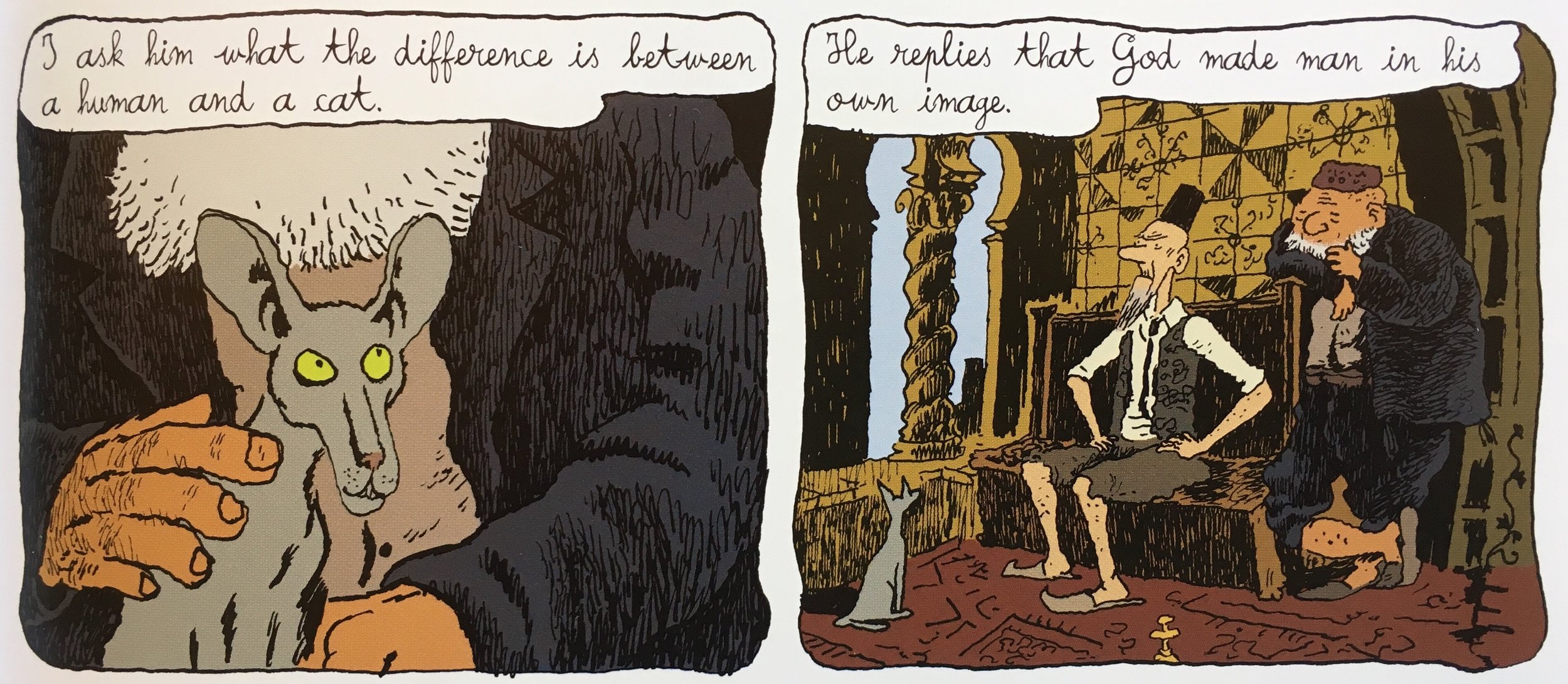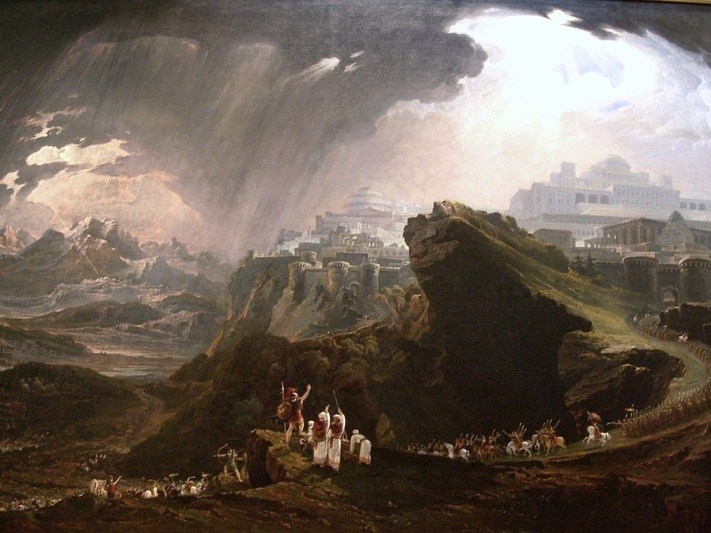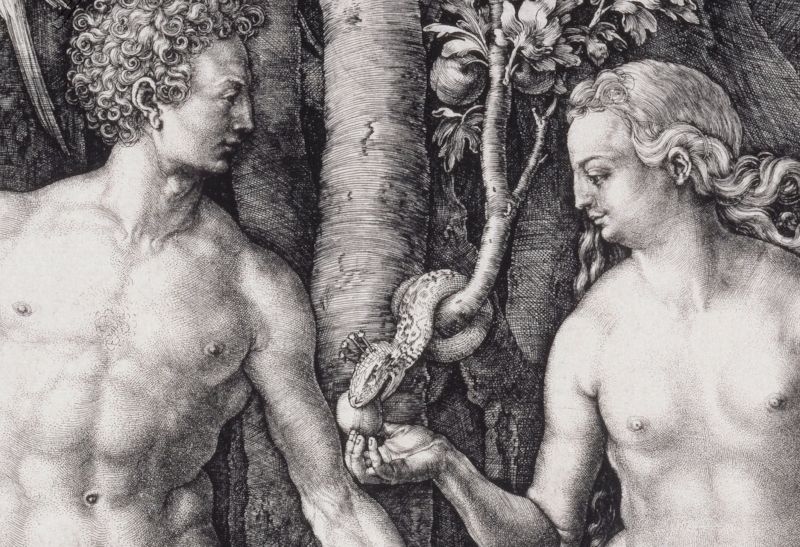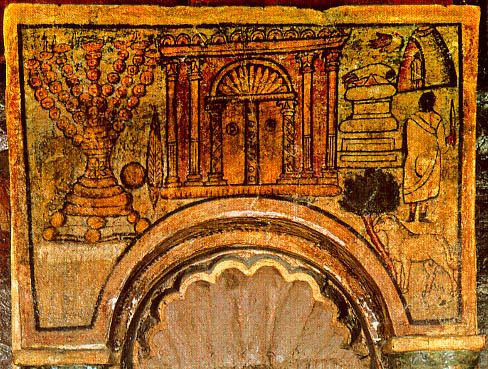The multiplicity of virginity and the rise of anatomical definitions created both opportunities and problems for late ancient Christian reasoning.
Read MoreTeaching Tactic: Critical Review of a Bible Film or Novel
“The trickiest part of the review assignment is getting students to understand what it means to perform expertise as a biblical scholar.”
Read MoreAnimals in Late Antiquity
After Post, or, Animal Religion in an Age of Extinction
The human animal destroys itself through confusion over its animality, but it destroys other animals in that confusion too.
Read MoreThe Uppity Donkey and the Distraught Rabbi: Critical Animal Studies and the Talmud
Beth Berkowitz continues AJR’s Animal Forum: “Ancient texts like the Talmud allow us to take biopolitics back to their formative years, to reveal how animals came to occupy the margins of personhood and how their only partially suppressed subjectivities formed the backdrop for the emergence of the human self as we know it.”
Read MoreAnimals in the Way
Janet Spittler continues AJR’s Animal Forum: “To be sure: the writings of many of the early Christian authors most closely associated with negative evaluations of animals are, upon closer inspection, much more complex than a cursory reading might suggest.”
Read MoreWhen Species Meet in the Mishnah
Joann Sfar, The Rabbi’s Cat, New York : Pantheon Books, 2005), 11/3-4 (image used with kind permission of artist)
Joann Sfar, The Rabbi’s Cat, New York : Pantheon Books, 2005), 11/3-4 (image used with kind permission of artist)
R.R. Neis begins the AJR Animal Forum: To the extent that concerns about the human, species, animality, and reproduction criss-cross antiquity and the present, a species-informed approach to late antiquity not only allows us to hazard ways of thinking/being the non/human, it also can short-circuit rhetorical invocations of a “Judeo-Christian tradition” by falsifying cherished myths.
Read MoreDissertation Spotlight | Mari Jørstad
In my dissertation I explore such texts – what I call “personalistic nature texts” – and their potential contribution to contemporary environmental ethics. I argue that the biblical writers lived in a world populated with a wide variety of “persons,” only some of whom are human.
Read MorePSCO 2017-18 | Sacred Landscapes of Germanus
Drawing on the phenomenology of movement – landscape made knowable through movement in it – Grey explored an alternative way to get to know ancient sources.
Read MoreTeaching History Beyond Grand Narratives
How do we encourage our students to think of the past not as a grand narrative to be learned from a textbook (or a teacher), but as a complex constellation of events, values, personalities, and ideas that can be analyzed and understood from a variety of perspectives and that can be used to construct multiple possible stories about the past?
Read MoreDissertation Spotlight | Alex Ramos
Drawing on insights from scholars in Religious Studies who have demonstrated the artificiality of modern distinctions between religious, political, and economic spheres, I consider the ways that political and religious institutions and frameworks could have shaped the boundaries and incentives of economic behavior among Jews in Early Roman Galilee.
Read MoreReflections on My Journey with John | A Retrospective from Adele Reinhartz
For my part, I am satisfied that I have said what I can, and want, to say about this Gospel. Aside from my growing discomfort with John’s anti-Jewish language, I have gained much from my longstanding relationship with this Gospel, including a community of scholars whom I value and respect.
Why Do the Infancy Gospels Matter?
As I studied the infancy gospels, I began to wonder if something had been overlooked in the intense scholarly focus on the figures of Jesus and Mary. That something, I concluded, was the depiction of familial relationships.
Read MoreDissertation Spotlight | Olivia Stewart Lester
The ongoing appeal of prophecy as a rhetorical strategy in Revelation and Sibylline Oracles 4–5, and the ongoing rivalries in which these texts engage, argue for prophecy’s continuing significance in a larger ancient Mediterranean religious context
Read MorePSCO 2017-18: Snakes in the Garden: Sexuality, Animality, and Disability in the Rabbinic Garden of Eden
How do the rabbis conceptualize the biblical “cleverness” of the snake? How do such ideas map onto larger questions of human and animal embodiment?
Read MoreDissertation Spotlight | Nathan Schumer
The Torah Shrine at Dura Europas via Wiki Commons
The Torah Shrine at Dura Europas via Wiki Commons
"Why does the Mishnah get so many historical details about the Second Temple period right?"
Read MoreArius Redivivus, Yet Again
My book aims in part to connect debates between Nicenes and Homoians in Vandal Africa—and across the post-imperial West—to those wider developments in the historiography of late ancient Christianity from which they have been peculiarly absent.
Read MoreCuriouser and Curiouser: In Search of the Rabbis' Ethnography
Are there patterns among these descriptive detours, the rabbit-holes of the rabbinic imagination? Do they point to consistent interests? Retrace stock motifs and techniques? How can we map their interconnections, and how are they linked to normative projects–broadly defined–at the nerve-center of this rabbinic canon?
Read MoreAugustine and “Thinking with” Jews: Rhetoric Pro- and Contra Iudaeos
To call a gentile Christian a “Jew” was likewise to accuse him of being un-Christian, indeed of being anti-Christian. The heretical Christian “Jew” – whatever current Christian doctrinal enemy that might be – was thereby identified with the scriptural enemies of Paul, of Jesus, and of God.
Read MoreVoices, Fragments and Selves: Preserving Ancient and Contemporary Multi-vocality in Our Classrooms
Whose voices from the past have been preserved, whose voices have been lost, and what is at stake, ethically and methodologically, for whose voices, past and present, we choose to hear today?
Read More


















